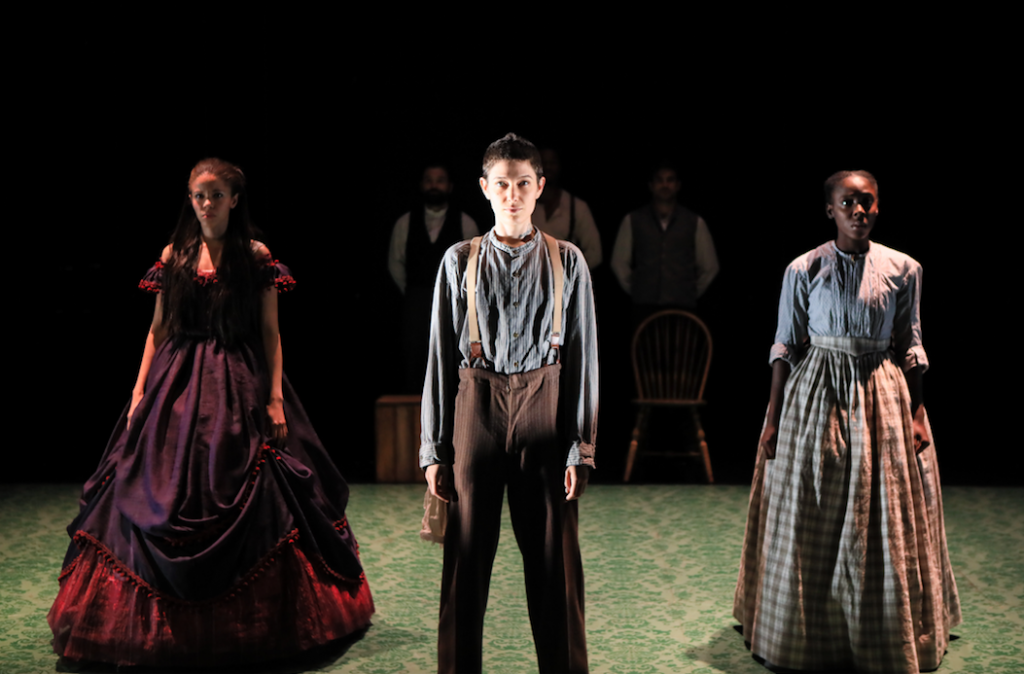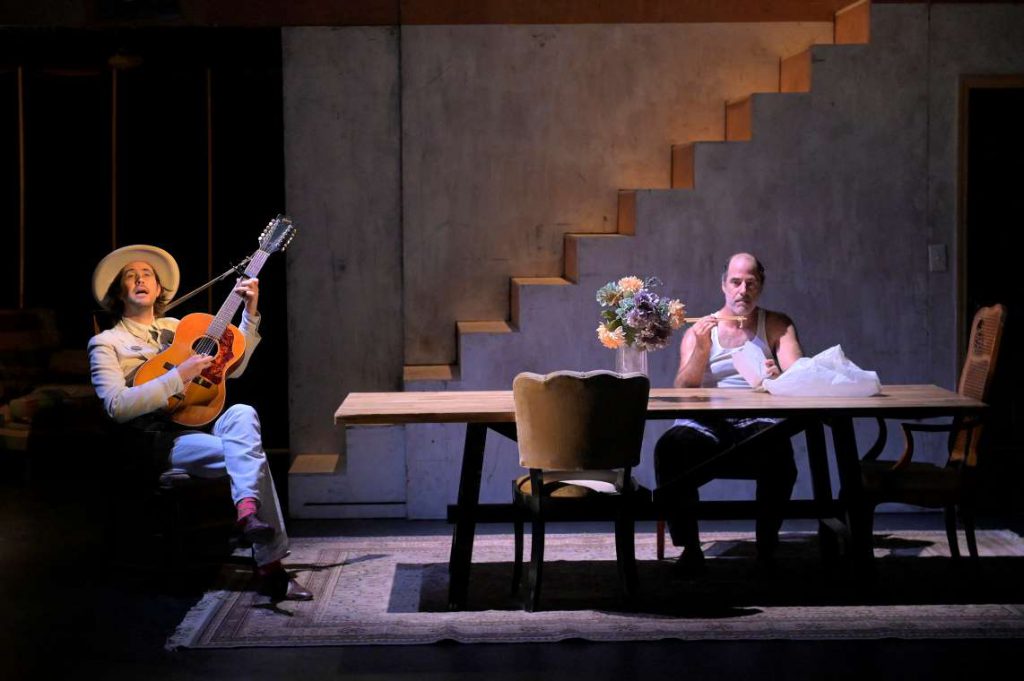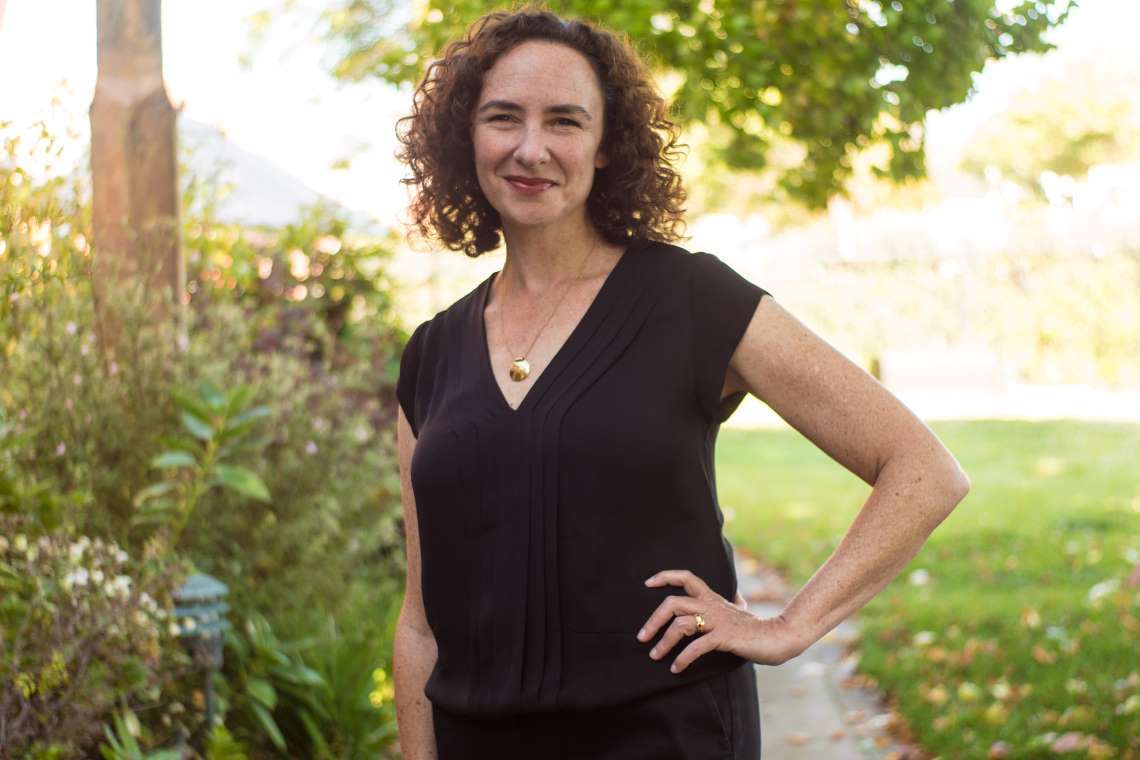This is part one of two of Johanna Pfaelzer and Lisa Steindler in conversation, in which they discuss Pfaelzer’s upcoming transition and the division of leadership roles in theatre.
Johanna Pfaelzer is the incoming artistic director at Berkeley Rep Theatre and Lisa Steindler is the executive artistic director of Z Space.
Lisa Steindler: When do you start your tenure at Berkeley Rep Theatre?
Joanna Pfaelzer: I’ve started already, at least in a very part-time way, in that I’m planning the 2019–20 season. But I won’t be there full-time until next September. It’s been a while since the Bay Area has actually been home. I left American Conservatory Theater (A.C.T.) to come back to New York in June of 2007.
Steindler: So it’s been a decade. Things have changed, but you know the Bay Area still. We’ve been through a couple of booms and busts since then, artistically, economically, socially.
Pfaelzer: That seems to just happen there; the ups and downs are dramatic.
Steindler: They are. That’s a question I’m interested in because four of our large theatre institutions here—TheatreWorks, A.C.T., the Aurora Theatre, and Berkeley Rep—are all undergoing leadership transitions within two years. I’m very excited and hopeful about this next phase for the artistic community of the Bay Area. What will it look like in five or ten years? What sort of partnerships can be forged? What kind of work will be done? It’s the Wild West again.
How do you envision yourself in your new leadership role, working with the artistic community of the Bay Area? What are some of the partnerships you hope to forge; how do we become stronger together? I believe if Berkely Rep is strong as an arts organization then Z Space is strong as an arts organization. It’s not about competition. We all make each other stronger, ultimately. Although a little competition is inevitable, and healthy.
Pfaelzer: I couldn’t agree more. Programmatically, I don’t yet know what that could mean and it would be super presumptuous of me at this point to walk in and say, “Hey everybody, here’s the plan.” But I do feel like there’s a real openness and Pam MacKinnon, the new artistic director of A.C.T., and I have started talking about this, and I know Susie Medak, the managing director at Berkeley Rep, and Jennifer Bielstein, the new executive director at A.C.T., are having these conversations as well, about what we can collectively do to make the Bay Area a viable place for artists to lead grown-up lives, and therefore for them to continue to commit to the community.

Steindler: That’s a great start. I’ve been thinking about creative ways to address those very challenges. I’m part of a kind of think tank put together by the Rainin Foundation. We’re focused on creating the best possible conditions for art to be made and looking at different models of sustainability.
Did you read the article David Dower wrote about these transitions in leadership positions?
Pfaelzer: Yes. I felt immediately years behind in my own thinking.
Lisa Steindler
It’s hard to walk in as the new person, so how do you position yourself and implement your own ideas and aesthetics while honoring the past?
Steindler: One of the things he touched upon is that any organization transitioning leadership will inevitably lose artists, board members, patrons, and subscribers. All organizations undergoing these transitions are vulnerable to these losses. It’s hard to walk in as the new person, so how do you position yourself and implement your own ideas and aesthetics while honoring the past? What are your thoughts on how to navigate that or where you do you see the challenges?
Pfaelzer: I went from New York Stage and Film to A.C.T. and then back to New York Stage and Film. So it was a funny trajectory, but I think you’re asking an incredibly important and really, really complicated question. When I first came into New York Stage and Film, it was a company with three founders—Leslie Urdang, Max Mayer, and Mark Linn-Baker—who deeply identified with and were hugely invested in the organization. And, at that point, in 1998, they were very hands on in its day-to-day operations.
One of the things that the four of us learned over a period of five years was how to share not just the management of the company but the relationships of the company. But we had time to do it because there was essentially a multiyear transition in that case, so there was time for those artists to get to know me and there was time for me to get to know them. And it was a conscious choice to say, “These are people who are extraordinary in their field and who have this deep sense of identification with this company and I want this to continue to be a home for them.”
Steindler: Was it two or three years that you worked side by side with them?
Pfaelzer: Two years before they made me an equal partner with the three of them. And then there was a slow shift where we evolved our leadership structure, but it didn’t really formalize until I came back in 2007, after five years at A.C.T., and they stepped back and made me the company’s first artistic director. I think the reason we all felt so comfortable with it is that we knew each other deeply, there was a real shared sense of values. And not just values, but practices. One of the things we’re anticipating here now as we embark on the beginning stages of a search for the next artistic leader for New York Stage and Film is realizing that we’re going to have to do it in a very different way. And that feels both exciting and a little daunting.

Steindler: Different in how it normally happens? As in you can’t just hire a headhunter and put it out to the field, but that you have to be much more creative, transitional and invested?
Pfaelzer: Yeah. New York Stage and Film is such a uniquely structured company, and I think there’s a real openness on the part of the founders and the board to think about what leadership might look like going forward.
Steindler: There was a study that Emiko Ono from the Hewlett Foundation wrote in 2016 called Moving Arts Leadership Forward. It was about looking at organizational structures and how we can rethink and prepare for the next twenty-five years, which I took to heart. We just celebrated Z Space’s twenty-fifth anniversary this year. And so what do the next twenty-five years look like. We have started the process of creating a distributed leadership model.
Lisa Steindler
The idea of distributing leadership, and this burden or joy, depending on the moment or month, is to share all of that, but also to share the creation of the art as well.
Pfaelzer: What does that mean to you, and what does it mean specifically about Z Space?
Steindler: Like all executive artistic directors, I bear the burden of the failure or success of my organization. It’s on my shoulders alone, or at least it feels that way. I think, organizationally, that can be a very precarious place to be. The idea of distributing leadership, and this burden or joy, depending on the moment or month, is to share all of that, but also to share the creation of the art as well. It doesn’t necessarily mean there are four artistic leaders—it’s about being very thoughtful in where everyone’s expertise lies. Someone may be more creative, someone better with finances, someone more operational. And you work together from those zones, but you are working as equals.
On an organizational chart those are equal leadership positions because they are all integral to the success or failure of the enterprise. But you have your expertise in each of those places, and that hopefully creates more ownership. You need to be very clear about who has the responsibility for what, who’s accountable to whom, who is consulted and who is informed, so there’s not redundancy. But it’s critical we create opportunities for the next generation to enter the field and let them know there is opportunity for growth and leadership potential.
Pfaelzer: Absolutely.
Steindler: Hopefully we’ll have young leaders running mid-size organizations sooner rather than later and, in ten years, they will be running the regional theatres with so much more expertise under their belts. With so many people leaving the field after many years in leadership roles, I’m not sure we have adequately developed or created opportunities for the next generation to take up the reigns.
Continued in “Taking Risks and Minimizing Failure—Part Two.”
This piece, “Taking Risks and Minimizing Failure” by Johanna Pfaelzer and Lisa Steindler, was originally published on HowlRound Theatre Commons, on December 23, 2018 and has been lightly edited.
